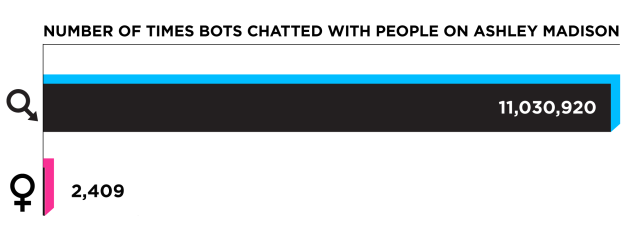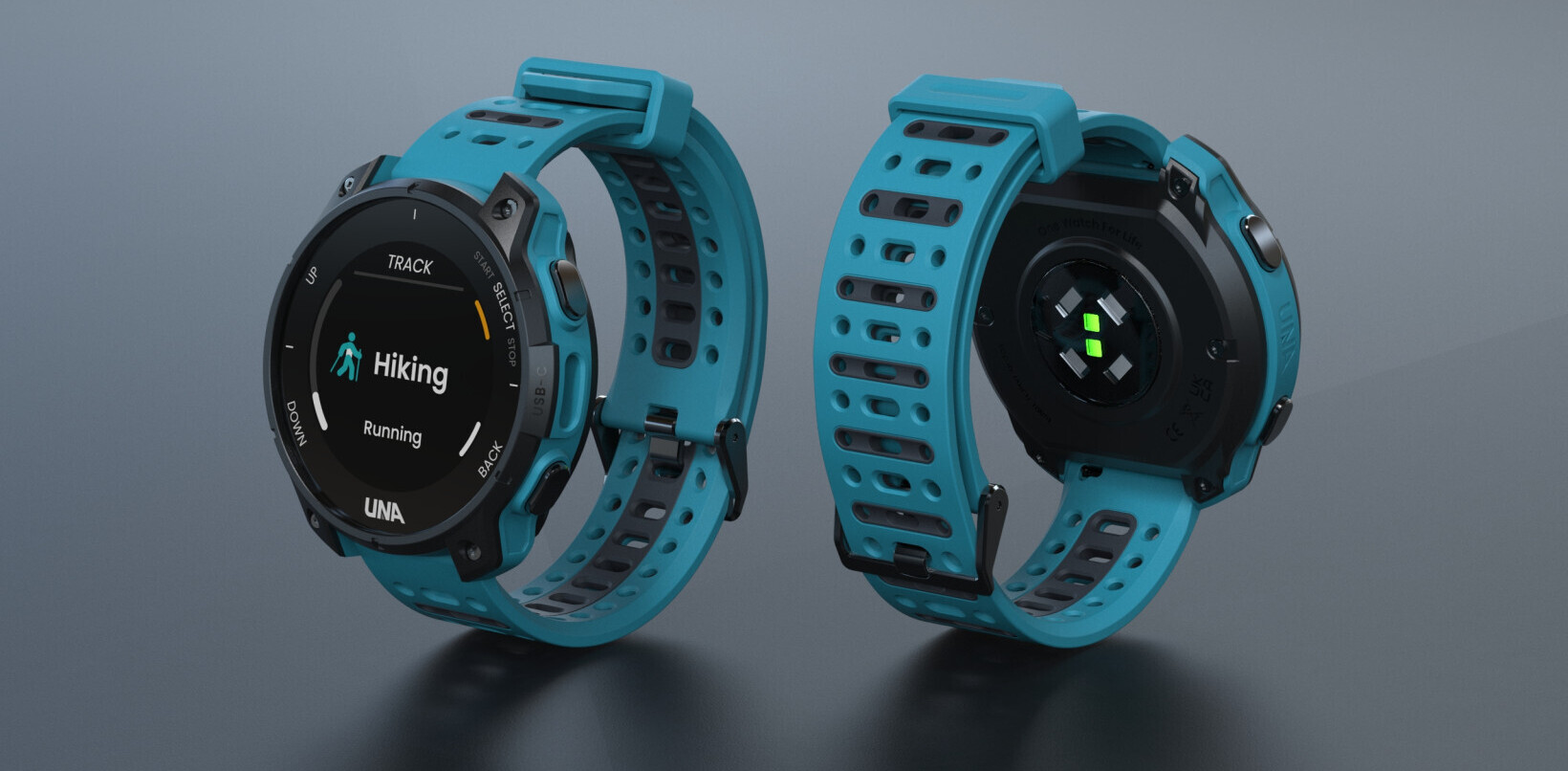
Just in case you think we’ve exited the Uncanny Valley of affair site Ashley Madison, particularly its use of bots to cater to the desires of attached men eagerly seeking a mistress, surprise! There’s more to be had on this wild ride.
Ashley Madison and its parent company, Avid Life Media, released a statement yesterday indirectly accusing Gizmodo for inaccurately representing the gender demographics of the site. It seems that in response, Gizmodo checked the math:
Today Ashley Madison released a statement saying that I couldn’t have figured out how many active women are on the site based on the data dump. The company is right about that. It may still be true that a relatively small number of women are active on Ashley Madison, but the evidence that I thought supported my claims means something else entirely…
Here’s where things get mighty tangled: it turns out that the evidence used to support Gizmodo’s data was woefully underpowered, and really didn’t show any human activity at all. Because nothing could be traced to actual humans, the claims made regarding Ashley Madison’s stated 5.5 million female users were unfounded.
However, that doesn’t mean that Ashley Madison didn’t use bots in order to lure in men seeking women, or fluff up the business enough to convince users to purchase activity credits on the site.
The Fembot Army
The data that Gizmodo leafed through is actually related to bots who are programmed to engage users — overwhelmingly straight male users — into conversation. Sometimes referred to as “engagers” other times referred to as “hosts” or “angels,” the data still tells an important story:
[T]he dramatic discrepancy between men and women is entirely because Ashley Madison’s software developers trained their bots to talk almost exclusively to men.
So, the data didn’t show that women never chatted with men — it showed that bots rarely chatted with women and focused their attention on men.

These engagers fit a mold: female. According to Gizmodo’s new analysis, just 43 of the 70,572 engagers were male. They would approach their (male) user with rudimentary dialogue (think a simple ‘hi’) and launch into some PG-13 pseudo Penthouse fantasy snippet that reeled him in. From there, data indicates the bot would push the user to buy more chat credits to engage on the site — presumably with them.
Because these bots targeted men and initiated in those conversations, it’s easy to see that Ashley Madison was doing a specific kind of astro-turfing with its userbase. Women seeking women and men seeking men — which are active but not necessarily sizable parts of the Ashley Madison demographic.
Since bots don’t target these audiences, it’s relatively safe to say real humans actually occupy those spaces. Gizmodo conceded that there are likely real women occupying the heterosexual space as well, though there’s still plenty of skepticism surrounding the numbers Ashley Madison has put out itself.
Everything is Bots
So what does it all mean, exactly? Well first things first: nothing on the Internet is really as real as you think it is. Ashley Madison is not the first site to have a concentrated, company-known astro-turfing scheme. Reddit co-founder and now-CEO Steve Huffman said in 2012 that he and co-founder Alexis Ohanian seeded the social platform with articles and users to make people who joined the site feel like they weren’t alone.
Additionally, the online dating world — from Tinder to OKCupid — is full of bots that are designed to push users to chat with bots, send money or even hire escort services. A guy who was once a surveyor of those sites told me that he could swipe right on Tinder seemingly endlessly, but found eager engagement only with bots. It’s not a surprise that dating sites are trawling with scammers eager to wring a couple bucks out of poor saps looking for love.
But all of this information isn’t designed to call into question the veracity of users on your favorite internet sites: there’s bots all the way down every where you go. That doesn’t mean there aren’t any human interactions or people participating on the sites you love. Some companies put bots on their own websites on purpose, sometimes scammers just show up organically — these things happen.
The real hangup, and why many people have been skeptical about Ashley Madison’s fembot practices, is that the evidence indicates that Ashley Madison was drumming up robots to push free users into taking the plunge and actually paying for the service.
The Ethics of Bots
Gizmodo’s findings indicate that the bots themselves weren’t that sophisticated, and there’s no real data to indicate how many times a bot successfully pushed a user into purchasing credits or an affair guarantee. But there’s an ethical gray area that emerges when a company is engineering to take money from its users through sheer deception. It’s one thing to seed for growth or to incentivize user ambassadorship through referral codes — it’s quite another to send bots to 11 million horny men to encourage them to spend on the site.
Although the data was initially incorrectly applied, its results aren’t any less damning. Ashley Madison and ALM still have plenty to answer for regarding their business tactics to entice and maintain users. The women may be there, but the bots never left.
➤ Ashley Madison Code Shows More Women, and More Bots [Gizmodo]
Get the TNW newsletter
Get the most important tech news in your inbox each week.




